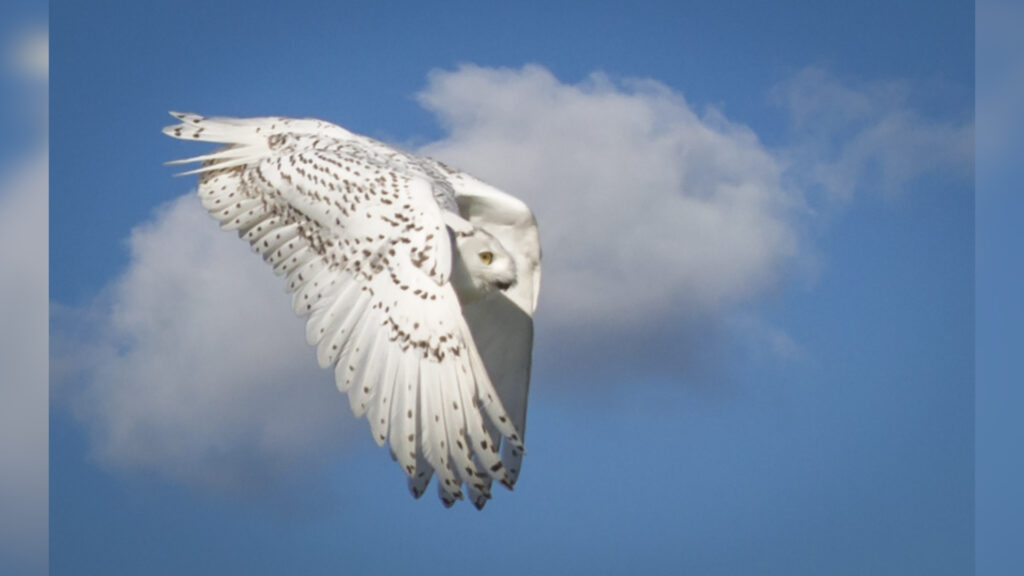Surplus of Snow Owls expected in the U.P. this winter

HARVEY — The winter marks a southbound migration for many animals, especially birds. But one specific bird won’t be flying near the equator. In fact, you may even stumble upon one in the near future.
We don’t see them all that often. But when we do, snow owls are a sight to behold. Normally, snow owls live in the Arctic, breeding and feeding in the frozen tundra. During the winter, these beautiful birds of prey fly south.
“Occasionally, we get what’s called an irruption of many snowys coming south into the United States,” said Jerry Maynard, co-founder of the Chocolay Raptor Center.
An instance of an irruption came in the winter of 2013. Jerry Mayard and others at the Chocolay Raptor Center took in eight snow owls for rehabilitation. Unfortunately, they were only able to save three.
On average, irruptions happen every three to four years. Rightly so…it is predicted that this winter will provide a decent “snowstorm”.
“We’re seeing lots of them in the U.P. We’ve got from west to east U.P., we’re getting reports every day of snowys,” said Maynard.
The raptor center has already taken in two snow owls this year, both of which have passed away.
But why?
After flying hundreds of miles south, these beautiful birds become hungry and weak. Once at their destination, you may come across a snow owl that isn’t moving.
“We’re getting three or four calls a day about snowys throughout the U.P. We ask people to observe, take photographs and enjoy the bird, but from a distance. Snowys are very unusual, they’ve got very unique behaviors,” said Maynard.
Some of these behaviors include sitting on the ground for hours at a time, even out in the open. But, perhaps the most interesting behavior?
“They’re not afraid of humans. So we’ll see them right here in downtown Marquette, and they’ll allow humans to walk up to them, usually getting 10, 15 feet, 20 feet before they fly, that is stressful for the bird, and we ask people not to approach too close, but to observe from a distance because they are beautiful birds,” said Maynard.
So keep your eyes peeled for these regal birds, but also be aware of their surroundings…and expect one heck of a snowstorm this winter.
